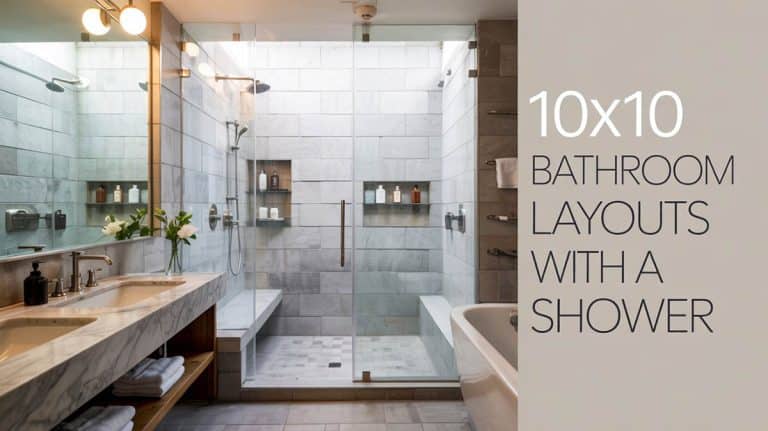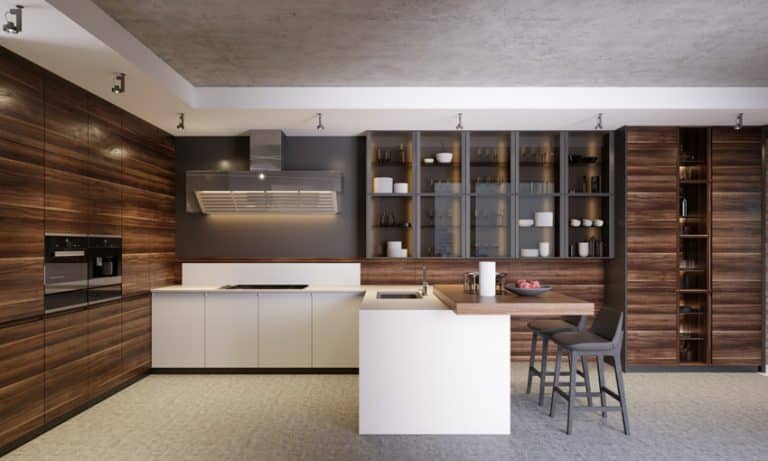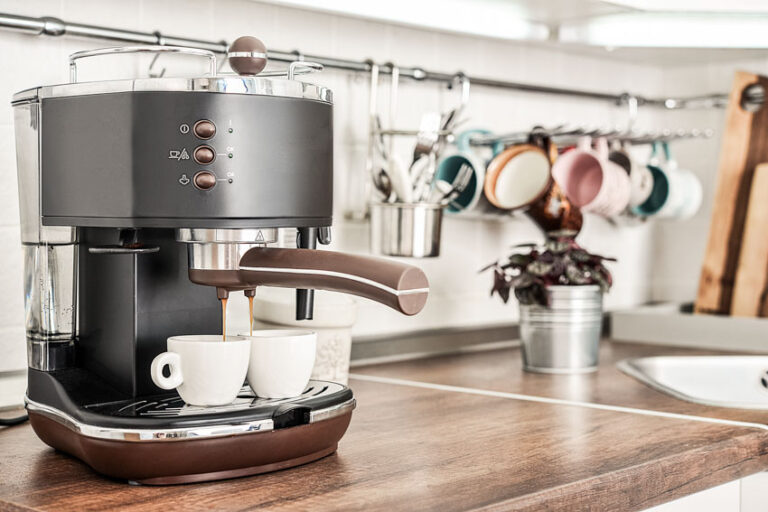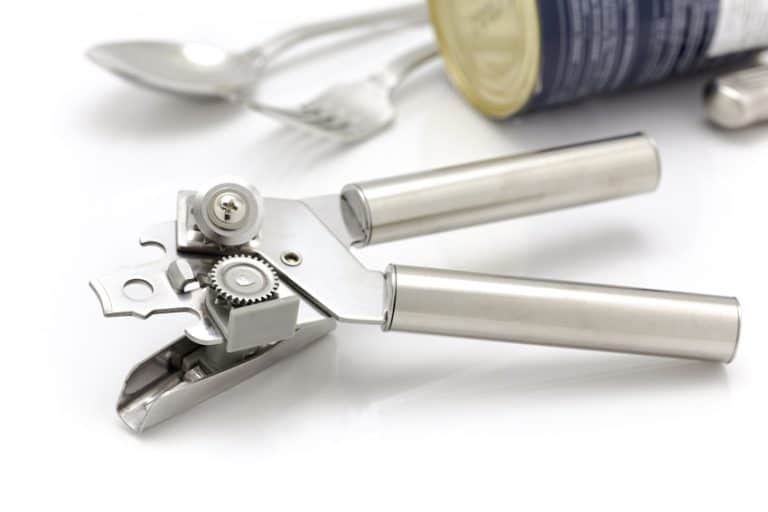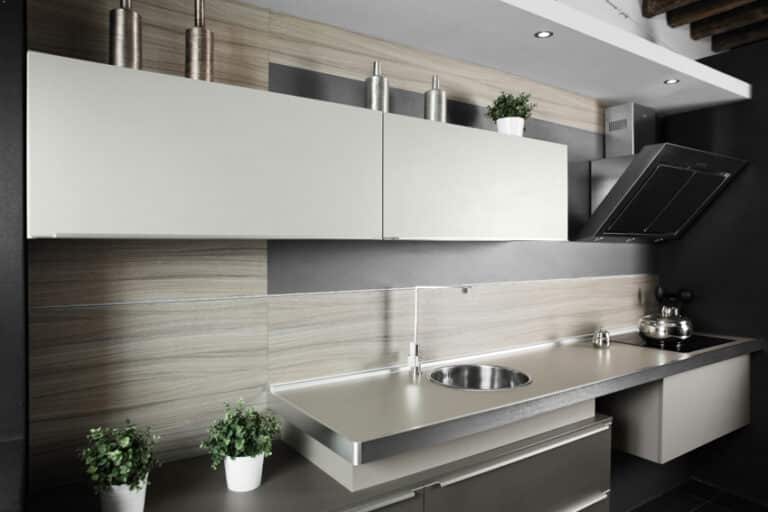7 Tiny Kitchen Layouts: Smart Designs for 30–70 Sq Ft Floor Plans

Having a small kitchen space doesn’t mean you have to sacrifice its style or function. In this guide of tiny kitchen layouts, we’ll explore 7 architect-inspired floor plans that show how the tightest spaces can be transformed to work with your needs. From classic galley, L-shaped kitchens to effective U-shapes, compact islands, peninsulas, and innovative pull-out designs, each layout focusing primarily on efficiency, comfort, and flow in under 70 square feet. Whether you’re designing a kitchen for a studio apartment or a compact guest suite, these ideas are sure to inspire.
5×9 Single-Wall Kitchen Layout
By combining a 9-foot cabinet run with a 36-inch aisle, this 5 × 9 single-wall kitchen provides full-size functionality in a compact size.
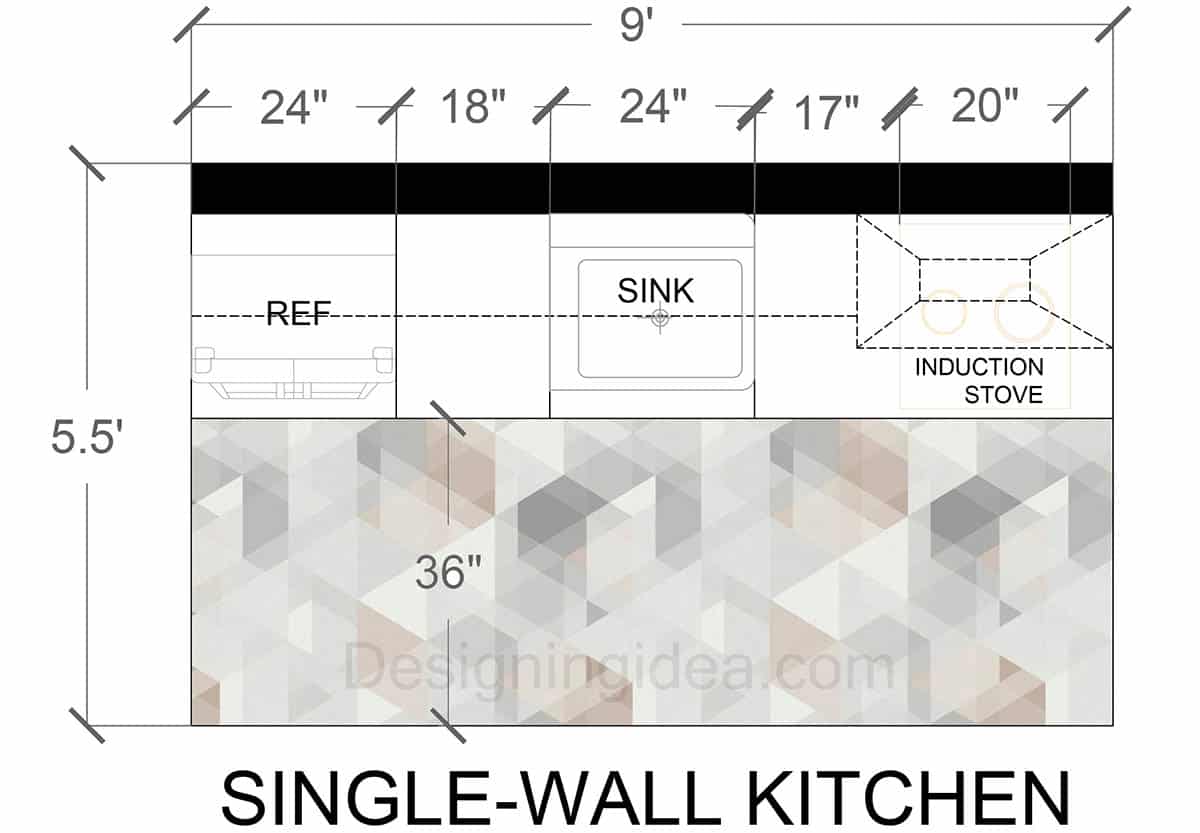
Floor Plan Details: This fully-functional single-wall kitchen design takes up a small 45 sq ft of space and successfully lines up every essential task along a straight 9-foot run. Beginning on the left-hand side, a 24-inch apartment-sized refrigerator marks the cold food storage zone. An 18-inch countertop and base cabinet follows, giving you a place to stage groceries and a first bit of prep surface. Centered along the layout is a 24-inch sink, creating an effective central area for a clean-up station. To the right of the sink, a 17-inch stretch of counters provides secondary prep space before the run finishes with a 20-inch, two-burner induction cooktop set into a shallow base cabinet. The arrangement respects a logical cold → prep → clean → prep → cooking workflow. The overall room depth of 5 ft 5 in breaks down into 2 ft of cabinet depth and 3 ft (+ or -) of clear floor space, a proportion that keeps the galley comfortable instead of feeling cramped.
Dimensions:
- Room size: 5 ft 5 in × 9 ft
- Cabinet run: 108 in (9 ft) total
- Refrigerator: 24 in wide
- Prep base: 18 in
- Sink: 24 in
- Secondary prep zone: 17 in
- Induction cooktop base: 20 in
- Counter depth: 24 in standard
- Clear floor aisle: 36 in (meets NKBA minimum for one-cook kitchens)
- Upper-cabinet depth: 12 in across the 9-ft span and above the fridge
Design Tips:
- Use low profile/slim appliances. Opt for a counter-depth fridge and a low-profile induction cooktop to maintain a straight, uninterrupted line that doesn’t extend out to the aisle.
- Max out vertical storage. Use full-height upper cabinets (or even ceiling-height cabinets) to prevent clutter on the countertop and draw the eye upward, which can help the room feel taller.
- Light it smartly. Install some under-cabinet LED strips and a reflective backsplash to help bounce light across the 36-inch aisle.
- Choose a consistent finish palette. Match your cabinet hardware, and use a solid backsplash to reduce visual “busyness,” adding the illusion of width.
6×7 Galley Kitchen Floor Plan
This 6 × 7 galley provides an effective work triangle with the refrigerator placed next to the sink and across from the cooking range with a 42-inch aisle that allows two people to work together.
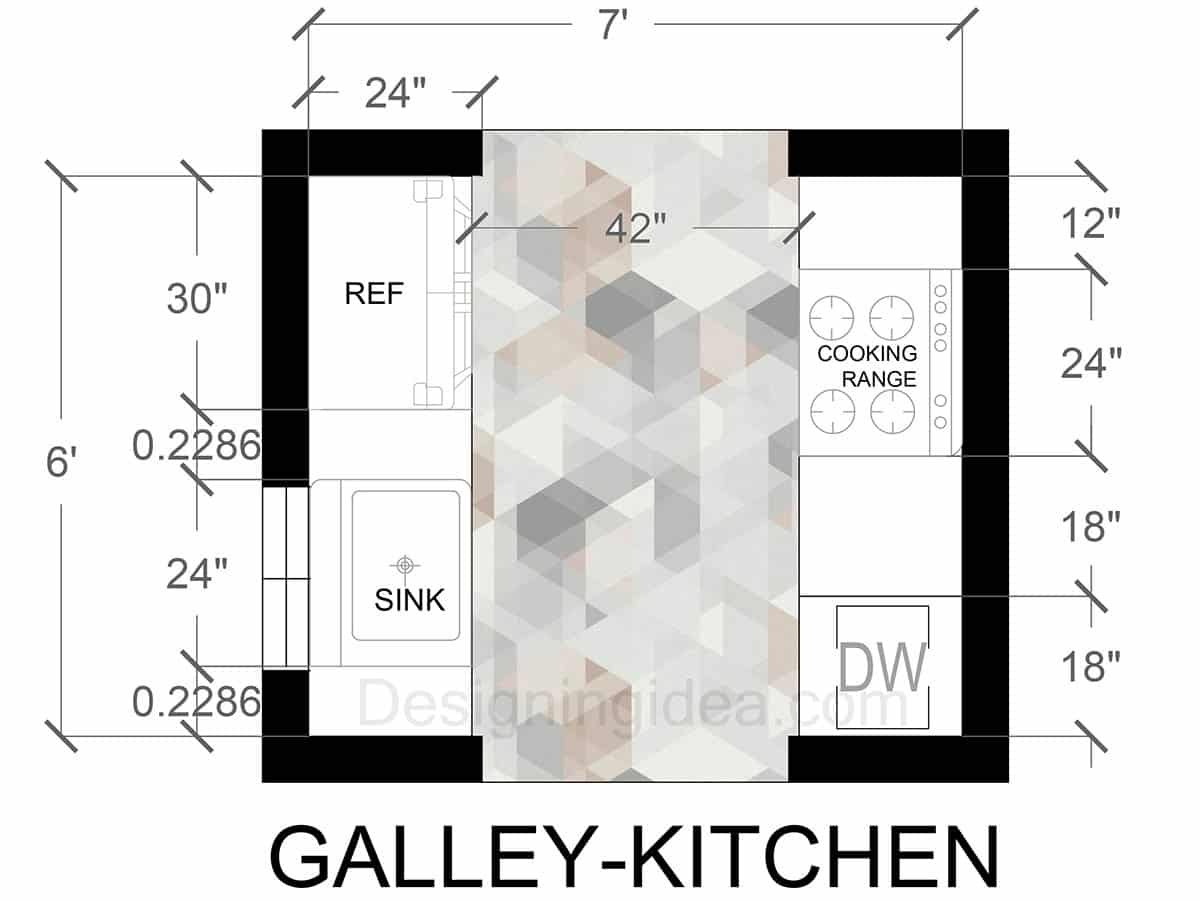
Floor Plan Details: This micro-galley kitchen is ideal for narrow apartments or space-limited homes. The design makes the most of its 42 sq ft space by running two parallel cabinet runs and carving out a comfortable 42-inch center aisle. On the left side, the cabinet run starts with a 30-inch apartment-sized refrigerator at the top, and is followed by a 24-inch sink base flanked by slim pull-out trash drawers. The opposite right-hand run begins with a small bit of counter-space, followed by a 24-inch four-burner range, and closes with an 36-inch counter section that conceals an integrated 18-inch dishwasher underneath. The result is a logical fridge → sink → range work sequence with clean prep surfaces on both sides of the aisle.
Dimensions:
- Room size: 6′ 0″ (depth) × 7′ 0″ (width)
- Center aisle: 42″ clear (meets NKBA galley guidelines)
- Left run (standard depth 24″):
- Refrigerator: 30″ wide
- Sink base: 24″ wide
- Right run (shallow depth 18″):
- Utility shelf: 12″ wide
- Cooking range: 24″ wide
- Prep/Dishwasher base: 18″ wide
- Overall linear counter length: 66″ left + 54″ right = 120″ (10 ft)
- Counter heights: 36″ standard
Design Tips:
- Stagger cabinet depths. Consider shallower cabinet boxes (24″ vs. 18″) to steal precious inches for the walkway without cutting appliance capacity.
- Keep tall items to one end. Parking the refrigerator at the entry prevents a visual “wall” in the middle of the room and frees elbow space at the sink.
- Choose compact appliances. A 24-inch range and 18-inch dishwasher hit full-size functionality benchmarks while fitting the shallow run.
- Light the corridor. Attach continuous LED strips under uppers cabinets to bounce light across the aisle and make the 42″ passage feel wider.
6×6 L-Shaped Kitchen With Corner Sink Layout
This L-shaped kitchen footprint squeezes a full work triangle and 48 inches of turning space into just 36 sq ft room, making it perfect for a tiny corner space.

Floor Plan Details: Inside this compact 6-ft-by-6-ft square (36 sq ft), L-shaped kitchen you’ll find two 24-inch-deep cabinet runs against the left and top walls. The design is ideal for corner spaces, and the working sequence starts at the far-right end of the top run with a 24-inch apartment refrigerator (cold-storage zone). Moving on to the left there is a continuous 48-inch counter that turns the corner and hosts a 24-inch sink set on the diagonal to fill the corner. By rotating the sink 45 degrees, it frees usable counter on both sides, while softening the 90-degree corner. The layout then steps down the left leg to a 24-inch four-burner range. working from right to left you can go from the fridge → prep → clean → cook triangle for effective meal prep. A chamfered cabinet cut-back at the inside corner creates a comfortable 48-inch turning zone, so doors, drawers, and limbs all clear each other without crowding anyone.
Dimensions:
- Room size: 6′ × 6′
- Cabinet depth: 24″ on both legs
- Horizontal (top) leg: 48″ counter + 24″ refrigerator
- Vertical (left) leg: 24″ cooking range
- Corner sink base: 24″ wide, set 45 ° to walls
- Diagonal cut-back / clear floor width: 48″ inside the L
- Work-triangle travel: 7 ft total (well within NKBA “compact” guideline)
Design Tips:
- Use a corner sink. A diagonal 24-inch sink base salvages otherwise dead corner space and adds elbowroom for two-sided prep work.
- Chamfer the corner. Clipping the base cabinet at the inside corner gives you a 48-inch turning radius so the range door and fridge door will never collide.
- Anchor tall appliances. Placing the refrigerator at the outer end of the run keeps sight-lines open and lets light reach the prep zone.
- Go vertical on the longer cabinetry run. Full-height uppers (or open shelves) above the 48-inch counter provide pantry space without encroaching on the 48-inch clear zone.
- Use multifunctional drawers. A skinny pull-out spice rack beside the range or toe-kick drawers under the sink capture storage the footprint can’t spare.
6×8 U-Shaped Kitchen Design
This compact U-shaped kitchen delivers a floor plan that keeps everything within easy reach and provides a large walkway that feels larger than it is.
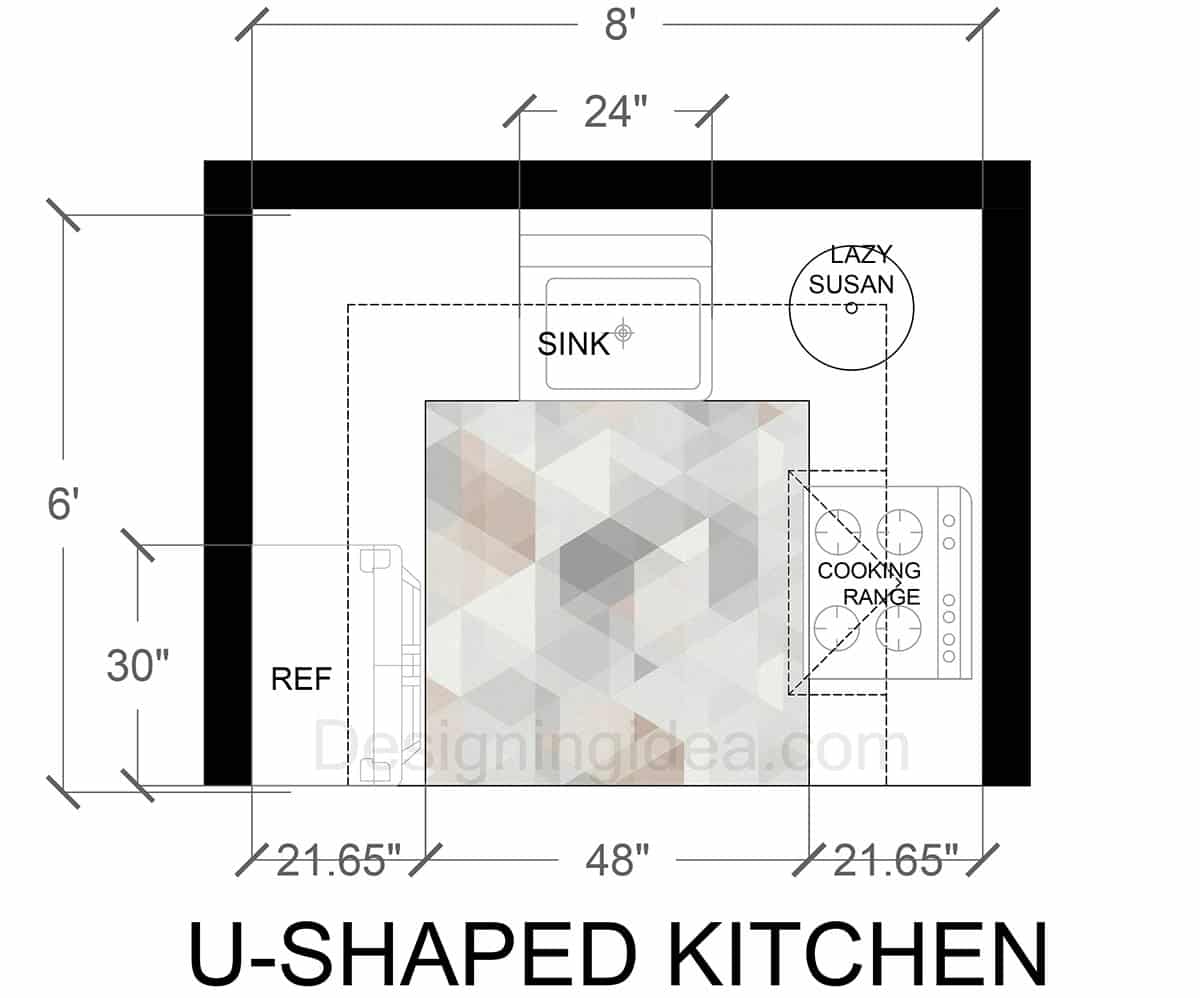
Floor Plan Details: This micro U-shaped kitchen is only 48 sq ft, but still manages to wrap three work zones around a generous 48-inch center aisle to provide a fully-functional space. The deepest run at 24 in spans the 8-ft back wall and centers a sink beneath the window to better appreciate the outdoor views. The left-hand side starts with a 30-in. refrigerator near the doorway so it’s easily accessible. Swinging to the right side, there is a matching wing that holds a 24-in. four-burner range. Both corners are anchored by a diagonal cabinet, one fitted with a two-tier lazy Susan to better use an otherwise difficult spot. Together, the fridge → prep → sink → prep → range loop forms a tight five-step work triangle that makes everything within an easy reach to help eliminate unnecessary steps.
Dimensions:
- Room size: 6′ 0″ (depth) × 8′ 0″ (width)
- Center aisle: 48″
- Side-wing cabinet depths: 21.65″ each
- Left wing:
- Refrigerator: 30″ wide
- Right wing:
- Cooking range: 24″ wide
- Counter frontage left of range: 21.65″
- Work-triangle legs: Fridge→Sink 45″, Sink→Range 48″, Range→Fridge 60″ (all within NKBA “efficient” window)
Design Tips:
- Shallow side wings increase the aisle size. Trimming the arms to ±22 in. deep preserves a full 48-in. passage—comfortable for one cook, passable for two.
- Enhance the corners with smart storage. A two-tier lazy Susan keeps pots and dry goods from vanishing into the blind corners and doubles usable capacity.
- Prioritize natural light. Center the sink under the back wall window to draw the eye outward, and visually extend the small room.
- Stick with slimline appliances. A 24-in. range and counter-depth refrigerator provide full functionality without swelling the footprint.
- Unify the U with matching materials. Continuous countertop and matching cabinet fronts flow around the perimeter, avoiding visual breaks that could shrink the space.
6×8 Kitchen With Peninsula Layout
Adding a peninsula to your small kitchen offers a place for two-person seating for eat-in dining and squeezes in extra prep counter space.
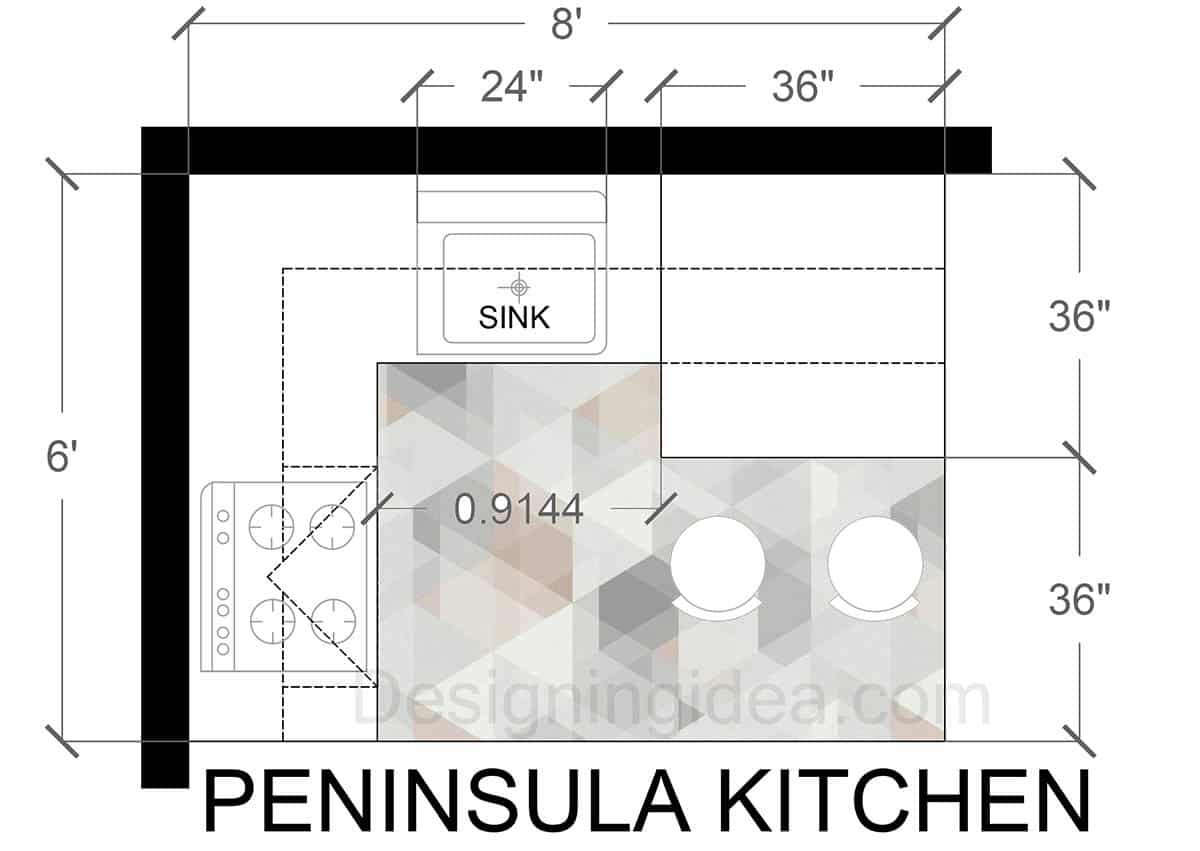
Floor Plan Details: This tiny peninsula kitchen design is ideal for open-plan living, as its compact 6 ft × 8 ft (48 sq ft) footprint creates a practical “G-shape,” that is very functional. This layout places all the cabinetry on two walls and adds a 3-foot-deep peninsula to allow for dining or just entertaining friends or family. Along the 8-foot back wall, a sink is centered and can accommodate wall shelving above. Turning the corner, a four burner range sits on the 6-foot left side wall. On the other side the peninsula projects 36 inches into the room, and offers a full-depth (24 in.) base cabinet with a 12-inch overhang to allow for two counter stools. The result is a compact but comfortable work loop that goes from: fridge (opposite the peninsula, not shown), → range → prep on peninsula → sink, allowing guests to perch at the bar without standing in the cook’s way.
Dimensions:
- Room size: 6′ 0″ D × 8′ 0″ W
- Back-wall counter to peninsula: 36″ (0.914 m) is the primary work aisle
- Peninsula depth: 24″ cabinet + 12″ stool overhang (36″ total)
- Peninsula length: 48″ (seats for two)
- Walkway outside peninsula (right side): 36″ to keep through-traffic out of the work zone
- Range width: 24″; set on left wall with a corner cabinet for door clearance
- Work-triangle legs: Range → Sink 48″, Sink → Fridge (across aisle) 50″, Fridge → Range 60″, all meet NKBA efficiency guidelines
Design Tips:
- Use the peninsula as a multi-task zone. The surface can double as a main prep counter and breakfast bar
- Install electrical in the peninsula. Add power outlets on the gable for small appliances.
- Maintain dual 36-inch aisles. One inside the work triangle and one outside to avoid overcrowding.
- Check the corner cabinet door. That clipped cabinet beside the range prevents a hard 90° pinch-point and lets oven doors swing open.
- Light the bar area overhead. Hang a pair of mini-pendants over the stool cut-outs to turn the peninsula into an inviting gathering spot.
- Keep tall masses opposite the peninsula. Positioning the refrigerator on the wall across the entry keeps sight-lines open and avoids crowding the sink.
5×6 Kitchen With Pull-Out Storage Solutions
This shape-shifting kitchen design uses clever pull-outs and a flip-down counter to turn this 5 × 6 pocket kitchen into an open space for full cooking duty, or closed for a clear living area.

Floor Plan Details: Inside this small 5 ft × 6 ft kitchen layout is a compact design featuring pull-out kitchen features that ideal for RVs, tiny homes, or convertible spaces. The design hides most of its working parts behind 18-inch-deep base cabinets so the 36-inch center aisle stays functional. The 6-foot back wall is divided into a 24-inch column for a counter-depth refrigerator and a 48-inch stretch of shallow cabinetry. Under that 4-foot run sit four modular, full-extension boxes (orange arrows) that roll completely clear. Inside is a slim pantry, a pull-out prep block, a two-burner induction module with a flip-down worktop, and a double-trash drawer capped by a 15-inch sink. When everything is contained, the line reads almost like a sideboard; when a meal is underway, each element glides forward to create up to 16 sq ft of extra counter and storage without eating into the aisle space. Two 18-inch stools nest in front of the refrigerator, sliding under the fold-down counter for snack time or work on the laptop. This results in a single-cook galley that transforms from “in-use” to “tucked-away” in mere seconds, and is perfect for studio apartments, guest suites, or van-life conversions.
Dimensions:
- Room size: 5′-0″ D × 6′-0″ W (30 sq ft)
- Back-wall cabinet run: 6′ total
- Refrigerator niche: 24″ W × 24″ D
- Pull-out/induction module: 18″ D × 24″ W
- Pull-out pantry & trash: 18″ D × (3 × 12–16″ W)
- Sink base: 18″ D × 18–20″ W
- Clear center aisle: 36″
- Fold-down counter extension: 18″ D × 24″ W (adds 3 sq ft of prep/eating space)
- Seating clearance: 24″ knee space for each stool when counter is opened
Design Tips:
- Go shallow to gain passage. Capping the whole run at 18 inches deep (vs. the usual 24″) buys an extra 6″ of aisle without giving up a standard fridge.
- Think in modules. Mount the induction hob on a full-extension base so it slides out for cooking, then it glides back to become an ordinary drawer front.
- Use toe-kick drawers. Shallow pans and cutting boards can be hidden under the fridge cabinet, leaving the main pull-outs for bulk storage.
- Add stool parking. Choose stackable or backless stools that slide under the fold-down ledge; when stowed, they keep the 36″ walkway fully open.
7×9 Kitchen With Small Island Design
This tight but functional kitchen packs a small 2×3 ft island into the design for a complete work triangle and casual seating.
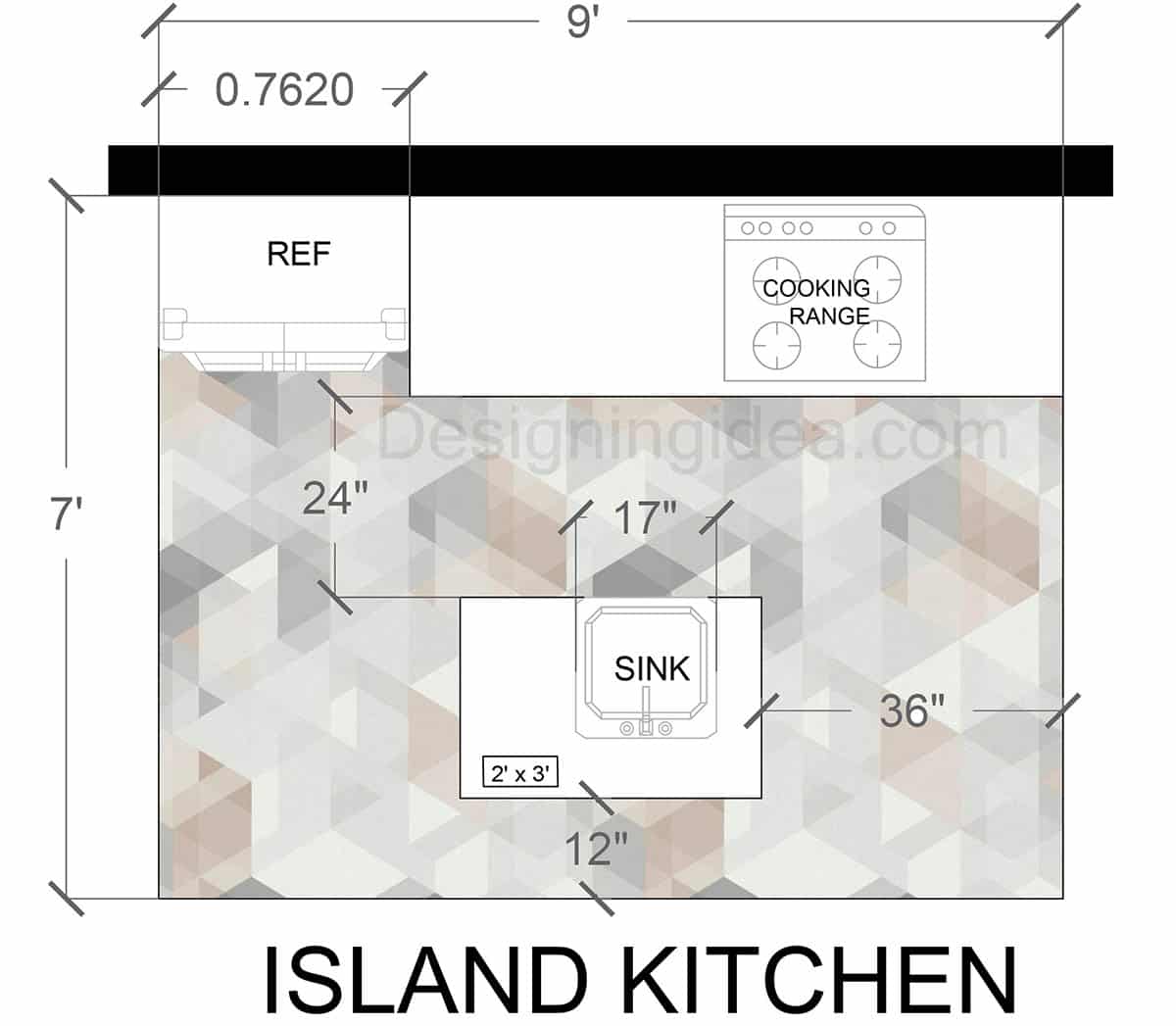
Floor Plan Details: Inside this modest 7-ft-deep × 9-ft-wide (63 sq ft) room, the cold and hot zones are placed along the back wall, and a petite island is positioned at the center. The back run holds a counter-depth refrigerator on the left, leading to a short 24-in. prep counter, and a 30-in. four-burner range on the right. Because all the cabinetry along that wall is the full 24-in. depth, the working side of the room remains flush. A 2 ft × 3 ft island sits 30 to 36 in. in front of the back run, with a single-bowl sink and a 12-in. overhang on its dining side that can accept two barstools. Traffic circles the island in a U-shape so that groceries can be dropped near the fridge, ingredients can be prepared at the prep strip, and one can pivot to the island sink, and finish at the range. This creates an efficient “back-wall-to-island” triangle that keeps everything close to the cook’s core and allows for a spot for eat-in dining.
Dimensions:
- Room size: 7′ 0″ D × 9′ 0″ W
- Back-wall base depth: 24″ continuous
- Refrigerator niche width: 30″
- Prep strip between fridge & range: 24″
- Cooking range width: 30″
- Island size: 24″ D × 36″ L (sink centered)
- Island seating overhang: 12″ (south side)
Clearances:
- Island ↔ back run: 30″ to 32″ (minimum one-cook aisle)
- Island ↔ right wall/entry: 36″ (comfort pass-through)
- Island ↔ left side passage (near fridge door swing): 32″ to 34″
Work-triangle legs:
- Fridge → Sink: 48″
- Sink → Range: 48″
- Range → Fridge: 66″
Design Tips:
- Scale the island to the room. A 24-in.-deep island preserves at least 30 in. of circulation on the prep side while still fitting a full sink bowl. If you have a larger space you can enlarge the island accordingly.
- Keep the back run flush. Counter-depth appliances and no-handle cabinets create a single plane that visually widens the narrow 7-ft depth.
- Use the island for plumbing. Shifting the sink off the back wall frees a continuous counter beside the range, which is prime real estate for prep and landing hot pans.
- Add multipurpose seating. The 12-in. overhang provides perch space for two stools that doesn’t get in the way of the 36-in. main aisle.
- Light the island, and brighten the room. A pair of small pendants hung above the sink works as task lighting and a focal point to enhance the design.

